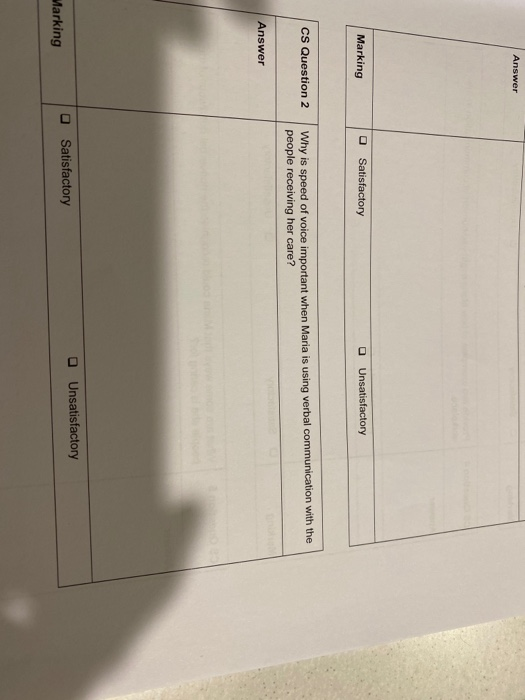What is Voice Modulation in Communication
Voice modulation in communication refers to varying pitch, tone, and pace to convey a message effectively. It enhances clarity and impact in verbal interactions.
Effective voice modulation can create emphasis, convey emotions, and maintain listener engagement. This skill is crucial in public speaking, storytelling, presentations, and broadcasting industries. Mastering voice modulation can help speakers deliver their message with confidence and influence the audience. By understanding the nuances of voice modulation, individuals can effectively communicate their ideas and connect with their listeners on a deeper level.
In today’s fast-paced world, the ability to modulate one’s voice is a valuable asset for successful communication in various personal and professional settings.

Credit: franticallyspeaking.com
The Importance Of Voice Modulation
Voice modulation is a crucial aspect of effective communication that directly impacts how a message is conveyed and received. It involves the deliberate variation of pitch, tone, pace, and volume in one’s voice to express emotions, emphasize key points, and engage listeners. The skilful use of voice modulation can significantly enhance clarity, convey emotions effectively, and ultimately improve overall communication impact.
Enhancing Communication Clarity
The deliberate variation of pitch, tone, and volume in voice modulation can enhance communication clarity by effectively highlighting important points and creating emphasis where necessary. By modulating the voice, speakers can draw attention to specific details and ensure that the main message is clearly understood.
Conveying Emotions Effectively
Effective voice modulation allows individuals to convey emotions with precision. By adjusting pitch and tone, communicators can express a wide range of emotions, such as excitement, empathy, concern, or urgency, making the message more impactful and engaging for the listener.
Techniques For Voice Modulation
Voice modulation is an essential skill in effective communication. It refers to the intentional manipulation of tone, pitch, pace, and volume in order to convey meaning, emphasize certain points, and engage listeners. A well-modulated voice can captivate an audience, command attention, and leave a lasting impact. In this blog post, we will explore some techniques for voice modulation that can help you enhance your communication skills. Let’s dive in!
Volume Control
Volume control involves adjusting the loudness or softness of your voice while speaking. It is useful in creating emphasis and highlighting important points. By varying your volume, you can add depth and expressiveness to your speech, conveying emotions more effectively. It is important to note that excessively loud or soft voices can be distracting or disengaging for listeners. Striking a balance and using volume control strategically can help you keep your audience engaged.
Pitch Variation
Pitch variation refers to changing the highness or lowness of your voice during communication. By altering your pitch, you can add variety and interest to your speech. Higher pitches can convey excitement, enthusiasm, or surprise, while lower pitches can denote seriousness, authority, or gravity. Pitch variation can also help in distinguishing between different speakers or characters in a storytelling context. Using pitch variation effectively can make your speech more dynamic and engaging.
Pace Adjustment
Pace adjustment involves controlling the speed at which you speak. It is crucial in maintaining clarity, managing listener comprehension, and emphasizing key points. Speaking too fast can make it difficult for the audience to follow, while speaking too slowly can cause boredom or disinterest. By adjusting your pace appropriately, you can maintain a balance that allows listeners to absorb information effectively. Pace adjustment is particularly important when presenting complex or technical information, as it gives the audience time to process and understand the content.
In conclusion, voice modulation is a powerful tool for effective communication. By mastering techniques such as volume control, pitch variation, and pace adjustment, you can enhance your ability to engage and connect with your audience. Practice these techniques regularly, and over time, you will notice a significant improvement in your communication skills. Happy modulating!
Impact Of Voice Modulation In Different Scenarios
Impact of Voice Modulation in Different Scenarios:
Professional Settings
In professional settings, voice modulation enhances presentations and meetings.
Public Speaking
Effective voice modulation captivates audiences during public speaking engagements.
Customer Service
Voice modulation in customer service interactions conveys empathy and professionalism.

Credit: deepstash.com
Developing Voice Modulation Skills
Developing voice modulation skills is essential for effective communication. Voice modulation refers to the ability to adjust the tone, pitch, and volume of your voice to convey emotions, emphasize key points, and engage your audience. Whether you are a public speaker, presenter, or professional communicator, mastering voice modulation can significantly enhance your communication impact. Here are some valuable techniques and practices to help you develop and improve your voice modulation skills.
Vocal Exercises
Vocal exercises play a crucial role in enhancing voice modulation. Practicing breathing techniques, vocal warm-ups, and articulation exercises can help improve the flexibility and control of your voice. Engaging in daily vocal exercises can strengthen your vocal cords, expand your vocal range, and develop your ability to modulate your voice effectively. Moreover, these exercises can also help in reducing vocal strain and fatigue, allowing you to maintain a clear and expressive voice during extended speaking engagements.
Seeking Professional Guidance
If you are seeking to refine your voice modulation skills further, seeking professional guidance from a speech coach, voice trainer, or communication expert can be highly beneficial. A professional can provide personalized feedback on your voice modulation, offer tailored exercises to address specific areas of improvement, and guide you in developing a confident and authoritative vocal presence. Additionally, they can help you overcome any vocal habits or speech impediments that may hinder your communication effectiveness.
Challenges In Voice Modulation And How To Overcome Them
Voice modulation is the art of adjusting the tone, pitch, and volume of your voice to convey a message effectively. Challenges in voice modulation can hinder effective communication, but with the right techniques, these challenges can be overcome. In this article, we will discuss the challenges in voice modulation and how to overcome them, empowering you to communicate confidently in any situation.
Overcoming Nervousness
Nervousness can significantly impact voice modulation, leading to a shaky or monotone voice. To overcome this, practice deep breathing exercises and positive affirmations before speaking. Engage in regular public speaking to build confidence and control nerves. Remember to maintain good posture, which can also help project confidence in your voice modulation.
Adapting To Different Audiences
Adjusting your voice to suit different audiences can be challenging. To overcome this, understand the demographics and preferences of your audience beforehand. Use a friendly and approachable tone for informal settings, while opting for a professional, clear voice in formal environments. Observe your audience’s reactions to adjust your voice modulation in real time.

Credit: pdpnotesbygm.blogspot.com
Frequently Asked Questions For What Is Voice Modulation In Communication
What Is An Example Of Voice Modulation?
An example of voice modulation is speaking in different tones and pitches to express different emotions or convey emphasis. This can be demonstrated by a person using a high-pitched voice to sound excited, or a low, deep voice to express seriousness.
What Is Voice Modulation In Communication Called?
Voice modulation in communication is called intonation. It refers to the variations in pitch, tone, and pace used while speaking.
Why Is Voice Modulation Important In Effective Communication?
Voice modulation is important in effective communication to convey emotions, emphasis, and maintain listener engagement. It adds depth and clarity to the message, making it more impactful and engaging.
What Are The 4 P’s Of Voice Modulation?
The 4 P’s of voice modulation are pitch, pace, power, and pause. These elements help control and enhance the way you speak, making your voice more engaging and effective.
Conclusion
Voice modulation plays a pivotal role in effective communication. By adjusting the tone, pitch, and volume of our voice, we can convey emotions, capture attention, and create a lasting impact on our audience. It enhances the clarity of our message and adds depth to our expressions.
Mastering the art of voice modulation empowers us to become more persuasive, influential, and memorable communicators. So, let your voice be your most powerful tool in making a lasting impression.




